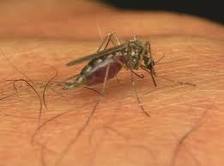HEALTH: Tests show positive for West Nile virus in the Okanagan
The Provincial Animal Health Centre has confirmed that a dead crow from the Central Okanagan area has tested positive for West Nile virus (WNV). This is the first positive case of WNV in a crow ever in B.C. and the first evidence of any WNV activity in the province this year. To date, there have been no human cases or positive mosquito pools reported or identified in the province.
“This positive confirmation of WNV activity does not come as a surprise,” said Interior Health medical health officer Dr. Rob Parker. “Since the disease was confirmed both in mosquito pools in the South Okanagan and in two human cases in the same area last August, we knew it was not a matter of if West Nile would appear elsewhere in the Interior Health region, but rather when.”
The bird was tested as part of a routine surveillance, followed by subsequent confirmatory testing at the B.C. Centre for Disease Control (BCCDC) Public Health Microbiology and Reference Laboratory.
“We have had positive mosquito pools in the past and last year we had both human and horse cases of WNV,” said Dr. Bonnie Henry, medical director of the WNV program at the BCCDC. “This is the first time we have had a crow test positive and it is a good indication that mosquitoes carrying the virus are active in the Central Okanagan and people should take precautions to prevent being bitten.”
WNV is spread by mosquitoes that have fed on an infected bird. The disease can sicken people, horses, many types of birds and other animals. It is not spread from crows to other animals or people. As the surveillance system can only detect the virus once it has moved into a new area, since last summer medical health officers have been warning all Okanagan and IH residents to take precautions against mosquito bites and WNV.
The virus is transmitted to humans and birds through bites from infected mosquito, and its spread over larger geographic areas tends to be associated with bird migration patterns. It was thought there would eventually be spread of the virus northward up the Okanagan Valley, but the speed and extent of that spread are unpredictable.
Interior Health will continue to collect mosquitoes for testing to detect the virus through the 2010 summer season and expand the surveillance program to include more mosquito trapping in the Central and North Okanagan areas.
“The best protection against WNV is to avoid mosquito bites and reduce mosquito breeding areas,” said Parker. “It’s important for people to be cautious when they’re outdoors, especially in the evening or early morning.”
Eighty per cent of people who contract the virus have no symptoms at all. The 20 per cent who do have symptoms may experience headache, fatigue, rash, fever, sore joints and muscles and sometimes an upset stomach. About one in 150 people who are infected will get a serious illness that can include inflammation of the brain (encephalitis) or inflammation of the lining of the brain and spinal cord (meningitis).


























Comments